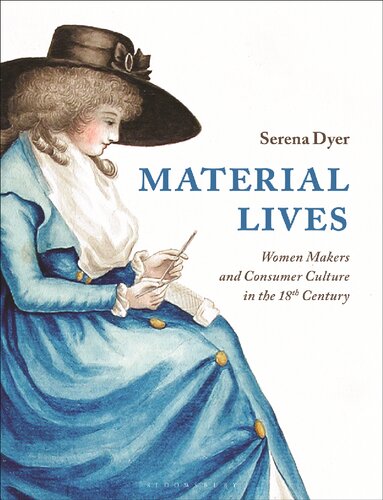Product desciption
Material Lives Women Makers And Consumer Culture In The 18th Century Serena Dyer by Serena Dyer 9781350126978, 9781350126961, 9781350127029, 1350126977, 1350126969, 1350127027 instant download after payment.
Conventional histories of the 18th century – and the industrial revolution and the birth of the consumer society – have distorted our understanding of the complex dynamics of material production and consumption and the ways in which these were experienced by both men and women. With its illuminating stories of women’s experiences, and their material literacy and agency as producers, Material Lives offers a new way of looking at this period, challenging previously held views and assumptions. Using deep archival research to tell these stories, Material Lives shifts the conceptual framework by which women are perceived as passive consumers – those who bought things – to active producers – those who made things.
Dyer focusses on genteel women, whose engagement with production has traditionally been characterised as decorative, trivial and superficial, and reveals the strategies used by women to negotiate and record their interactions with the increasingly sophisticated world of goods. Exploring the material archives of four women of the period – fabric samples, ‘dress of the year’ watercolours, doll-sized versions of women’s garments and adorned prints – as forms of lifewriting, or material biographies, the book reveals how women used the material culture of making to record and navigate their lives. In so doing, Material Lives challenges our previously held understanding of 18th-century society and the history of gender, making and consumption, placing women centrally as ‘makers’ in this new consumer society. For researchers and students of material culture, dress history, consumption, gender and women’s history, it offers a rich resource of stories to illuminate the past.
Material Lives traces the stories of four eighteenth-century women. Instead of words, these women used needles, brush strokes and scissors to craft their personal narratives. This book pieces together the scattered material remnants left by Barbara Johnson, Ann Frankland Lewis, Sabine Winn and Laetitia Powell, and unveils the material strategies they used to manage and memorialise their lives. As material forms of life-writing, these records contain rich evidence of the emotional, cultural and social lives of these women. Through stitches and brush strokes, the miscellany of creative material methods they used reveal that the abundant world of goods, which has dominated narratives around consumer culture, also fuelled women as makers. This book challenges the binary distinctions between makers and consumers, and instead suggests that a fluid material literacy was shared across society. The women examined crafted representational records of their own consumption, through which they managed and memorialised their consumer activity. Buying and making sat side by side, unified in a material culture of sartorial life-writing. Making, this book shows, was a powerful act of agency which was used to mediate a sophisticated consumer culture. These women chronicled their consumption through making, and they crafted their biography from dress.


